Rewritten: January, 2020
(Note, 1/14/2020: I have absolutely no connection with any of the companies named in this post, will receive diddley-squat if you click on the links to their sites. This ain’t that kind of blog.)
I didn’t travel much in my teaching years. I flew home to visit family on holidays, spent two summers parsing Spanish verbs in Cuernavaca. That was about all.
I decided to make up for lost time after I retired, and commenced the world wanderings chronicled in photo albums and blog posts past. I wanted to travel solo, have done all my getting around since in thirty-six countries and five continents on my own.
The getting around has been much easier than expected. English is a near global lingua franca now, rightfully or not, and the internet and smartphones have smoothed many of the rough edges of trip planning. That said, I also learned plenty, and realized during a 2015 dinner with friends that (a) not everyone knows about travel techniques and technology, and (b) many would like to know, so they can go gallivanting about the globe, too.
The flow chart below summarizes what I’ve learned. It’s incomplete, and inexpert; FlyerTalk forums are regularly frequented by folks who have forgotten more than I’ll ever know about international travel. I humbly hope that it’s better than no post at all.
Off we go:
Caveat emptor
You’re probably better off with a packaged tour or cruise if disorganized, inappropriately trusting of strangers, or eager to visit a potentially dangerous or primitive place. I have stuck mostly to low-hanging tourist fruit, and left war zone frolics to CNN reporters.

Do you have a passport?
You’ll need one: https://en.m.wikipedia.org/wiki/List_of_passports . First things first!
Please deal with this requirement now if remotely interested in travel in the months or years ahead.
Travel gear, excluding smartphone
These products have worked for me. You may find better elsewhere.
(♦) Travel vest. Indispensable for carrying stuff. I have flown with a netbook-sized computer in a travel vest pocket when concerned about the weight of my carry-on. The zippered inside pockets aren’t pickpocket-proof, but come close. I check forecasts before I leave, and board with either a standard Scottevest vest or one of their cold weather jackets; I own both. If it’s just barely cold enough for the latter, I can unzip the sleeves and morph it into a cold weather vest.
REI also sells travel vests. I liked the first Scottevest well enough to buy a second.
(♦) Luggage. Airlines may rarely lose bags, but I don’t want to give them the chance to lose mine, and am a card-carrying member of the “carry on whenever possible” party.
All airlines publish size and weight limits for carry-on luggage. Sometimes they enforce these limits, sometimes they don’t … but they always can, and the bag deemed too heavy or too large will get an unasked-for ride on the baggage carousel. I want my carry-on to be within their published limits, for size and especially for weight.
Weight issues retired my within-USA-domestic-airline-limits carry-on in early 2015. I had heaved this rollaboard into the overhead bins of flights to South America, Canada, Asia and Europe without a single check-in. In 2015 the same bag was flagged and checked-in twice for weight, and a nice sit on the bathroom scale showed why. It weighs ten pounds empty. I could stay inside the fifteen pound limit imposed by some international airlines by packing three pairs of jeans, and absolutely nothing else.
I bought a 1½ pound, 55x40x20cm Cabin Max Metz that year and have depended on it for most international air trips ever since. It is not a rollaboard, possesses no wheels, can’t be lugged behind me, and feels more like a kid’s knapsack than luggage for grown-ups. I have to tote it on my back, contentedly or not, but the bag’s 0.66 kg weight allows room for 13½ pounds of luggage.
Please note that even the spartan CabinMax might be flagged by some budget airlines. I suggest studying their rules and counsel offered by third-party web sites.
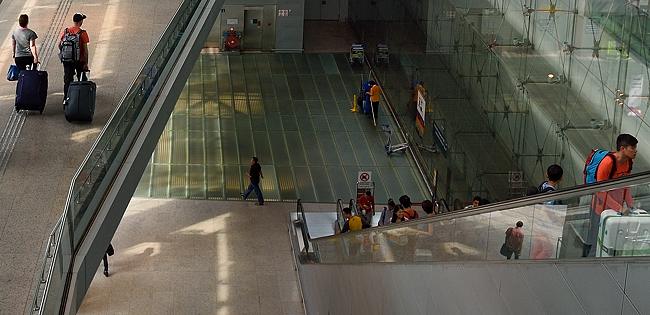
Airlines generally allow a second, smaller “personal item.” This is always my camera bag, and I have no counsel to offer on alternatives.
I am not the only traveler concerned about carry-ons. Please see:
http://www.flyertalk.com/forum/travel-products/895927-lightest-carry-bag.html
for eleven years and thirty-nine pages of online discussion.
You’ll discover at the airport that many who do check in bags pay to have these bags swaddled in plastic wrap.
(♦) USB data blocker. AKA, USB condom, for charging smartphones and laptops from public USB ports. No, not a joke. I may trust a battered USB slot at the airport to send juice to my battery-drained smartphone, but not nearly enough to let it interact with my smartphone as a computer. The little USB data blocker thingie disables the data pins.
(♦) RFID blocking wallet, so nogoodniks can’t slurp up your credit card information with an RFID reader. The Travelon RFID Blocking Billfold bought in 2011 still serves me well in 2020.
(♦) International electric adapters. I spent most of my life next to 120V/60 Hz USA outlets that accept a Type B or Type A plug. The Madrid outlet that feeds juice to my computer today is a 230V/50 Hz Type F. Different countries do the electrical thing differently. I often check the online list at World Standards; a search engine will turn up alternatives.

The five adapters in the Ceptics GP-5PK International Travel Worldwide Plug Adapter Set got my smartphone charged in every country except Italy, which required the separate purchase of a Type L adapter. There’s probably a more elegant solution.
Please note: read the little labels on your electrical doo-dads to see if they can hack the frequency and voltage they may get on foreign soil. Sticking a plug adapter on the end isn’t the same as giving that doo-dad the juice it wants.
My modern smartphone and tablet computer are comfortable with 50 – 60 Hz and 100 – 240 volt power. Yours might not be.
(♦) Travel security product. Maybe you’ll take to a waist stash, or a neck stash, or a leg safe, or a bra pocket (not me!), or security socks, or a money belt, but you’ll likely want something to securely carry that which musn’t be stolen.
(♦) Casio DW5600E wristwatch, to easily add or subtract hours as I move across time zones.
(♦) Global Entry may be a good investment for qualified travelers contemplating frequent entry or return to the U.S. First trip abroad? Don’t bother.
Traveling with a computer
Please don’t enter your personal password on a public Wi-Fi network without a VPN!
https://www.techradar.com/news/public-wi-fi-and-why-you-need-a-vpn
Advice on selecting a VPN is beyond the scope of this post. (Read, I’m too lazy to tell you how.) Research, dear reader! Make with the mouse!
Most free VPNs may be worse than worthless.

In my first trips to Europe, I regularly went online on a laptop by tethering it to my Android smartphone with a USB cable, and using the smartphone’s bandwidth for web surfing. Unfortunately, more recent Android versions disabled the feature. The technically adroit can re-enable it. Worked the last time I tried it in late 2018.
Travel gear, smartphone
Jacob Appelbaum has described smartphones as “tracking devices that make phone calls.” I think he makes an excellent point, but can’t imagine traveling without one.
I presume in 2020 that any smartphone can show my whereabouts on a map with a GPS signal and can access the internet to view web pages and send and receive messages. I also want it to be:
- unlocked, so I can pop in the cell phone sim card of another mobile data provider, as described below,
and to be equipped with:
- Maps.Me, RMaps or another ‘offline map’ app, to show my GPS location while strolling the street grid of an unfamiliar city. I also can use the GPS signal on ‘online’ Google Maps, but this requires bandwidth to redraw the map as I gallivant about town.
- the Uber app, if visiting a Uber-served city with inadequate public transit
- Moovit or another public transit app, if I intend to ride buses, trams, light rail or regional rail in an unfamiliar city. I won’t need an app to use that city’s metro, if it has one.
- an app or configuration setting to use a VPN (virtual private network; see above), if circumstances may force me to log into email or another service via wi-fi. Many recommend the OpenVPN for Android app by Arne Schwabe. I can skip this requirement if visiting a city certain to have good mobile data coverage.
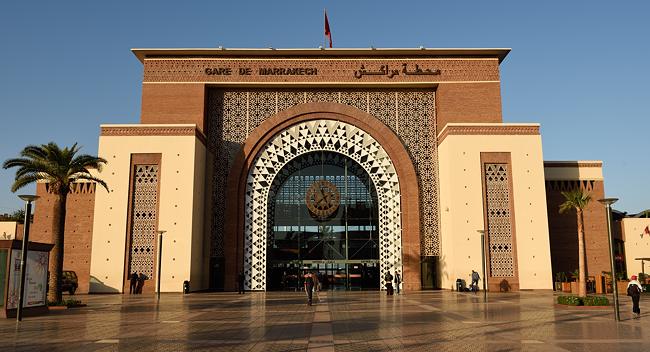
I have used countless other apps — for currency conversion, weather forecasts, language translation — but usually now perform such tasks through a web browser, and regard the apps as optional.
Using a smartphone abroad
I expect to take one of two tacks:
(♦) I can stick with my existing cell phone provider. I contact the provider (or investigate prices on its web site), tell a staffer where I intend to go, find out how much extra I’ll pay to use data during my trip out of the provider’s usual service area. The bill may be trivial while visiting some countries and exorbitant in others.
If the price is reasonable, I need do no more. My smartphone will figure out for itself which local provider to connect to when I get off the plane.
On most trips abroad today, though, I:
(♦) plan to buy a “prepaid sim” in the airport arrivals terminal of the foreign city to be visited.
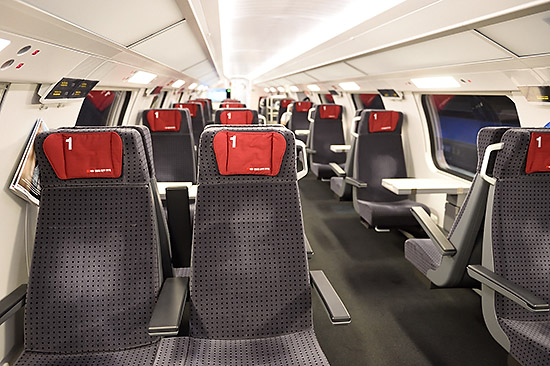
A “sim” is an integrated circuit on a fingernail-sized card. It slips into a slot on a smartphone to link it to a phone number and mobile data services. You’ve got a sim installed in your smartphone now. (Trust me.)
The fandom wiki and TripAdvisor threads help me research prepaid sim offerings in different cities. I look for the appropriate kiosk in the airport arrivals hall — for Ooredoo in Qatar, say, or MTS in Belarus, or Claro in Guatemala, to name a few examples — that will sell a prepaid sim for the local currency equivalent of five to thirty euros. (Roughly. I haven’t kept tabs on prices.) The prepaid sim will give me a local phone number and an allowance of data and cell phone minutes. I use it while in country and expect to chuck it when I get back on the plane to fly home. I dealt with an activation delay in 2015 in Istanbul, but nothing similar since.
Prepaid sim cards include disadvantages. Completing the buy at the arrivals hall kiosk takes ten to sixty minutes, depending on the city and traveler’s luck. I have no access to my home phone number while the foreign sim is installed, and can expect to be whacked immediately with a charge if I slip my home sim back into the smartphone to check messages while overseas.
The advantage? Bandwidth and cell phone minutes. Allowances vary, but they are always vastly more generous than the package available from my home provider while traveling out of its service area.
Your smartphone manual will tell you how to access its sim card slot. You’ll probably need to stick a paperclip into an eenie-weenie hole. I carry a bent paper clip in my smartphone case.
Decide in advance where you intend to store your home sim card. It’s small, easily misplaced.
Money issues abroad
When possible, I use a debit card to withdraw cash in the local currency at the airport ATM, then stop at a currency exchange counter on my way out of town to change any remaining funds to the currency of my choice. If I’m flying from Seoul to Shanghai, for instance, I might change remaining won to yuan.
Currency exchange counters offer a consistently poorer exchange rate than ATMs, and airport currency exchange counters probably offer a poorer exchange rate than currency exchanges elsewhere. I use them when I have to.
International ATMs bear the Plus or Cirrus symbol. I usually research “[airport name] ATMs” before leaving home, and also research traveler forums for ATM-related information.
Some debit cards allow no or low cost withdrawals overseas. See this link, and this‘n and this‘n.

Please interrogate your financial institution about the fitness of your current suite of cards for international travel. You don’t want to discover their inadequacies halfway around the globe.
If you doubt that you can withdraw funds from an overseas ATM, bring euros, U.S. dollars or another widely-recognized currency in a travel security product (see above) as a back-up. I had to resort to this back-up in Saint Petersburg and at least one other (now forgotten) city, couldn’t persuade the airport ATMs to work with my card. Forum threads about ATM-related crime also convinced me to stick to currency exchange while visiting Guatemala.
I swapped my battery of ‘swipe’ debit and credit cards for cards with chips when I first contemplated travel abroad.
Card issuers vary, but most will want to be informed in advance of international travel.
Cabbies in some cities try to curry favor with prospective clients by lingering near airport ATMs to offer unsolicited advice to arriving passengers on use of the machines. I don’t like chatting with strangers while fetching money, but can’t recommend a method to shoo them away. In Santiago, I had to pretend to get angry.
I naively visited one Shanghai bank in the hope of changing a single twenty dollar bill to yuan. I got it changed, all right … after forty minutes with a stony-faced bank manager hovering over the teller’s shoulder. Such a transaction was an unfamiliar big deal to them. I learned my lesson, and have stuck with ATMs and currency exchange counters ever since.
Destination research
The United States, United Kingdom, Australia, Canada, Spain (in Spanish) and, I don’t doubt, most other countries host websites offering their citizens country-specific advice on travel abroad, including information on safety, entry/exit/visa requirements, recommended vaccinations and more.
Rookie travelers should pay special attention to visa requirements. Visas may not be needed at all, or issued on arrival, or purchasable online in advance, or may require travelers to visit a consulate in their home cities weeks or months before a trip. It depends on your nationality and where you’re planning to go.
I also check: yearly weather/climate averages, cost-of-living information, likely English fluency level and — always, inevitably — the invaluable Wikivoyage.
Look for a flight (or flying alternative)
Consider checking Rome2Rio first to see if you can get there without a plane. You might be surprised! Or Seat61, always my first stop for tips on international train travel.

I start with ITA Matrix. It isn’t perfect, doesn’t show flights from some budget carriers — Southwest, Easy Jet, Ryanair — but beats other search engines. I may also slip a query into Google Flights, or Hipmunk or into the home page of a particular airline: Iberia, for instance, or Norwegian. Searching is free.
ITA Matrix will tell me that I can book Flight XX357 from Point A to Point B at hour X on day Y, but won’t tell me how often XX357 flies, or how frequently it arrives on time. I like to know those things. I do my detective work on flightsfrom, which shows all direct flights originating from a given airport, and on airportia or flightaware, which offer flight history.
I prefer to buy directly from the airline, and prefer to check-in and print out a boarding pass before arriving at the airport. Advance check-in is easily done at home. When on the road, it now often means checking in on my smartphone, downloading the .pdf boarding pass and re-sending the pass to the front desk of my home-for-the-night hotel. They then can print out a paper copy. I now only occasionally find internet-connected computers for guest use at hotels, likely due to malware concerns. I’ve seen too many travelers struggling with smartphone-only mobile boarding passes to want to use them when I can use paper instead.
If I can’t book a direct flight, I’d rather twiddle thumbs for an extra few hours at the in-between airport than risk missing a flight through a too-short connection time. What connection time is appropriate? It depends. Will I waltz unhurriedly between gates in the same terminal, or will I have to ride a shuttle linking distant terminals in the same airport? Am I traveling inside one country or one border control zone, like the Schengen area, or am I leaving said country or border control zone for a trip to a country that may require extra screening, like the United States?
If in doubt, I can post a question on a traveler’s forum to ask if others think I can make a connection. Before I ask, I can research airport layout, arrival and departure terminals, tips others have posted before me.
I fret most about connection times when contemplating an itinerary I didn’t find on ITA Matrix. I also worry if the itinerary puts me on separately-purchased flights from different carriers. I presume that Airline X doesn’t especially care if I bought a ticket for a too-close connection on Airline Y. They didn’t sell me the ticket, didn’t suggest the route; it’s no skin off their corporate nose if I sleep in the terminal.
I am likeliest to consider a short connection time if Airline X sells me the ticket and is operating both flights. I presume that they know their airports and wouldn’t sell me the ticket if I couldn’t make the connection. But that’s no guarantee. In 2017, the Lufthansa web site suggested and sold a St. Petersburg to Madrid ticket with a forty-five minute layover in Frankfurt. Russia isn’t in the Schengen Zone; I needed time to go through passport control and security, made my Madrid flight with minutes to spare.
The longer the flight, the more I appreciate the freedom of movement offered by an aisle seat. Others prefer the window.
If flying far, understand the international date line, to be sure of booking rooms on desired dates.
Americans and Europeans travel backward in time as far west as Hawaii, and forward in time most everywhere else. For an online demonstration, please search for and compare the results of “current time” Honolulu to “current time” Auckland. Please note the dates.
I don’t usually use SeatGuru, but probably would fly more comfortably if I did. Why be as foolish as I am?
Look for a place to stay
I avoid airBNBs, often little-loved by long time city residents. (See photo below.) That leaves hotels, and the web sites that review them, especially the 800 pound category gorilla: TripAdvisor.
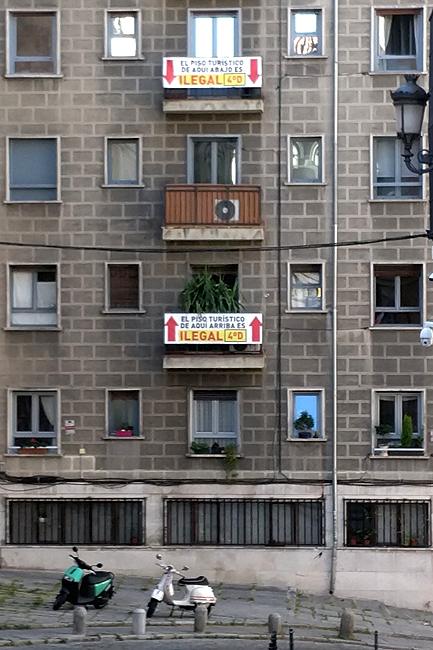
I believe, but can’t prove, that TripAdvisor is frequented by both honest reviewers — travelers like me, willing to share personal experiences — and by scammers, out to plump up star ratings and, perhaps less frequently, to slander competitors. I suggest plugging TripAdvisor “fake reviews” into a search engine if skeptical.
To distinguish between reviews that are real and unreal, I usually: ignore a hotel’s overall star rating; confine my search to hotels that have collected a representative sampling of reviews; pay more attention to 2, 3 and 4 star reviews than to 1 and 5 star reviews (although I have awarded 5 stars); presume that complaints about conduct of hotel staff usually tell me more about the reviewer than about the hotel, unless the reviewer rarely complains of such matters; look for yawning disparities between descriptions offered in positive and negative reviews, and check the reviewer’s contribution history, sometimes carefully, while understanding that a determined effort at sockpuppetry can deceive me. (My imperfect techniques are more fully described in a separate post.)
TripAdvisor’s strong suit — its moat, in investor terms — is its user base of honest reviewers. Scammers can work harder, craft elaborate sockpuppet profiles and posting histories, but can’t keep honest reviewers quiet.
I am nervous about providing credit card information to the sometimes primitive websites of overseas hotels, and thus often book rooms through Priceline or Booking.com.
I may be a poor choice for hotel advice. I’m happy to fly coach, but dearly want a good night’s sleep and a trouble-free stay, and often have overpaid to get it.
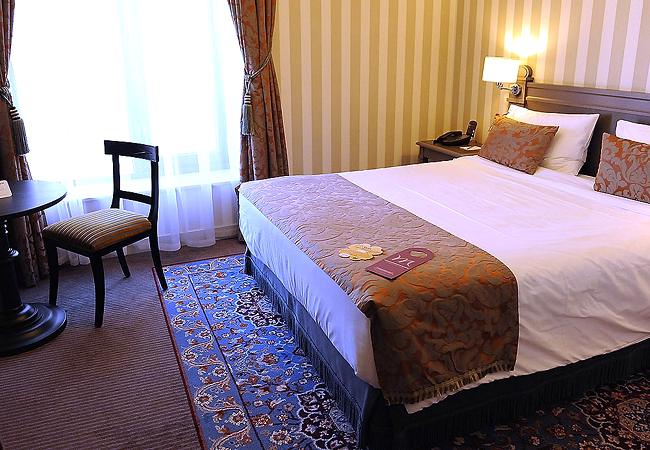
I don’t want a room next to the elevator or with a connecting door to another room, and say so when I arrive.
I unload my clothes and travel gear only to a few areas in the hotel room, and do not scatter them on every free shelf or drawer. This discipline has made it much easier to pack on check-out day without leaving that all-important adapter, charger or toiletry item behind.
Bedbug concerns
You don’t want bedbugs to hitch a ride home on your suitcase. Consider these two rigorous checks.
I check the bed, at least, and keep my luggage on the bathroom floor while doing so. I store my luggage on the room’s shelves or on a rack, rather than on a sofa, which may be likelier to harbor bed bugs in its seams.
The first thing I do when I return is to launder all clothes worn during the trip. I also store my luggage in an out-of-the-way place, far from my bedroom.
Look for transit information
Nearly all of the cities I’ve visited offer frequent, moderately-priced rail or bus service between their airports and the city center. I usually assume such service exists, unless my destination is obscure; I just need to find it.
I expect to do all my getting around by transit once in town. I rode cabs in Dubai, Singapore, and Luxor, and Uber in Doha and Cairo. If memory serves, those were the only exceptions.
If you’ve gotten around with a transit pass in a big city, you shouldn’t be too surprised by what you encounter abroad. Think of your straphanging skills as another lingua franca. Metro systems are generally similar; the relation of metros to streetcar and bus lines is similar, too, as are fare and ticketing schemes.
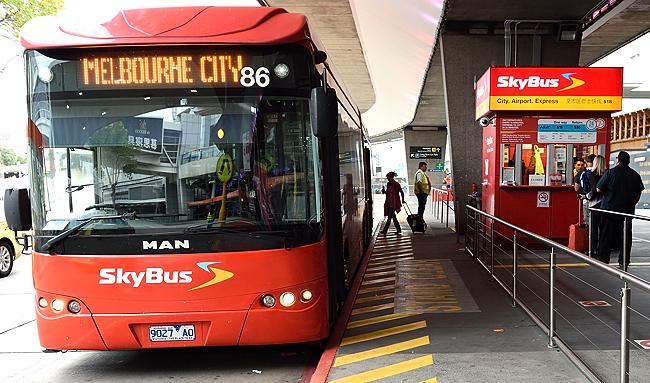
I look online for:
(♦) The agency in charge of local transit services. Searching for transit [city name] usually turns it up. Sometimes I find both a regional agency and a city-specific agency, as in Berlin’s VBB and BVG.
(♦) Fare information. Can I buy a one, three or seven day transit pass, or a ‘tourist pass,’ for visitors like me? Do I have to worry about zones? Can I store a pass or cash-for-rides on a credit card-sized smart card? Can I buy the pass and/or smart card at the airport, or do I need to wait until I’m in town?
(♦) Service information. Where can I download .pdfs of the metro, tram and bus network? Does the transit agency offer a smartphone app, and/or an online trip planner?
Some city transit services are easily researched; others are a chore. So far, I’ve always been able to learn the essentials before I leave.
Those who don’t want to do this research in advance can take a chance I’m unwilling to take, and save questions for the information kiosk at the destination city airport. You’ll almost certainly get answers there.
I described my experiences as a new Uber rider in a 2019 post about Egypt.
Several Spaniards have recommended BlaBlaCar for longer trips between cities.
Interested in renting a car? I think you may be grateful to see this Guardian article about car hire in Europe, but am otherwise not the guy to ask for tips. Sorry.
Trip Prep odds and ends
Can I drink the water there? What kind of electric adapters will I need to bring? What are the tipping practices? Should I know any country-specific customs and courtesies?
The internet will tell me; I do the research before I leave. I also may jot down emergency contact numbers for local U.S. embassies and consulates, but haven’t had to call one yet.
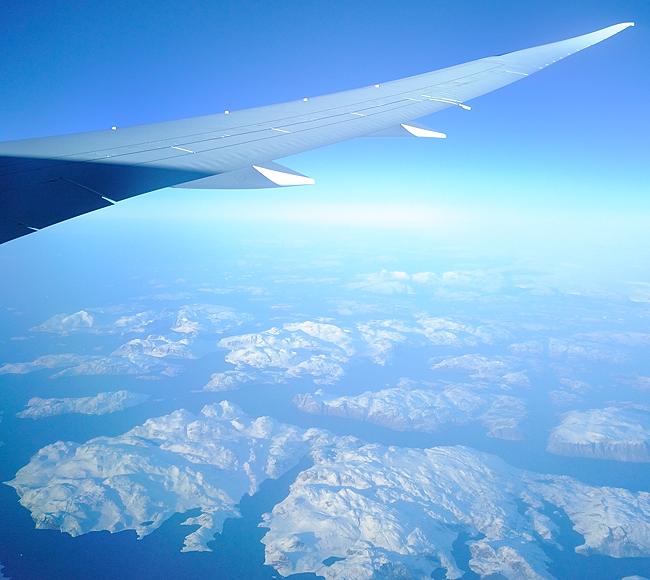
You’ll probably want to know if your European destination country is on the Schengen Visa Country list.
Fellow Americans should consider the State Department’s STEPS program, which allows us to inform the State Department of our overseas whereabouts in case of emergency.
Language issues
English is widely accepted as a second language. Young urbanites are likelier to understand English than older folk from the sticks.
For etiquette’s sake, I try to learn enough of the native tongue to say:
-
- Excuse me.
- Do you speak English?
- Please.
- Thank you.
- I am sorry
… and approach strangers with the most gracious Excuse me, do you speak English? I can muster. I speak Spanish, but would think it presumptuous of a Guatemala tourist to approach me on a Chicago street with a query in español. I’d like her to ask me first if I understand her tongue.
I sheepishly admit to frequently cutting corners on this step since 2016. My track record for coughing up these newly-memorized phrases in a clinch has been poor.
English is so widely understood in Copenhagen, Singapore, Dubai and Doha that I started English conversations in these cities without fear of giving offense.
I like the free Codegent ‘Learn [language] phrases’ apps, but have irritably deleted all the other language apps tried to date.
A travel list
I heartily recommend that you draft, refine, burnish and hone a travel list. An edited version of my personal list is online. Feel free to regard it as ludicrous overkill; it has repeatedly saved me from forgetting something essential. I don’t regret a single detail on it, eagerly add every new persnickety reminder-to-self that occurs to me, and always print out and carefully read and re-read every item before I leave.
I’ll offer a deal: I’ll smile while you laugh at my obsessive, overdone travel list, so long as it’s you, and not me, who gets to realize halfway across the Atlantic that the indispensable something-or-other is still in the desk drawer at home.
While on the road
I understand that I am at my most vulnerable when arriving in an unfamiliar environment after an overnight flight, and prepare with extra care for this segment of the trip. I’ll be exhausted after I get off the overnighter that takes me home, but will be weary on familiar turf.
As I approach the airport security check line, I transfer wristwatch, cell phone, spare change, keys and other metal-bearing trinkets to a zippered pocket of my travel vest, and then put the vest on the conveyor belt to be x-rayed. Security personnel get to see what they want to see, and I don’t feel harried while scooping up all those little trinkets on the other side.
Hotels either provide an iron and ironing board in each room, or — with a few exceptions — will provide one if asked. Most hotels charge a king’s ransom to wash, press and return travel duds. A few hotels provide coin laundry machines; unfortunately, most don’t.
Think ill of me if you will, but I often wear outer garments a couple of days, while washing undergarments in the hotel room sink. If you check the room’s shower, you may find a little pull-out cord for the drip drying of such garments.
Plug [city name] free walking tour into a search engine, and you’ll likely find candidates in your destination city. Guides are tip-supported, so participants are expected to give something, but can decide for themselves how much is appropriate.
These tours are usually two to three hours long, and cover the basics. They’re also a great way to meet fellow tourists. Those walking with you likely hail from spots all over the world, and probably will be happy to share travelers’ lore.
TripAdvisor offers “things to do” suggestions and reviews for major cities, as well as city-specific travel guides. I don’t suspect staff at the Louvre or the Met of creating fake user accounts to massage star ratings, and thus trust these attractions reviews far more than I trust reviews of hotels. (Unless the attraction is small and commercial. The Vatican Museums aren’t going to juice reviews, but Estafador Cocktail Beach Spree will, eagerly.) Travel books still have an important niche, too; you can try first, with a library check-out, then buy.
For more information: travel web sites with Q&A forums:
http://www.tripadvisor.com/ForumHome – TripAdvisor, all travel, hotel emphasis
https://www.lonelyplanet.com/thorntree – Lonely Planet, all travel
http://www.fodors.com/community/ — Fodor’s Travel Talk Community, all travel
http://www.flyertalk.com/forum/ — Flyertalk, flying emphasis
http://www.ricksteves.com/travel-forum — Rick Steves
http://discussions.flightaware.com/ — Flight Aware, all flying
Flyer Talk seems to attract the most sophisticated travelers. Please practice good forum etiquette by first hunting for answers in a search engine.
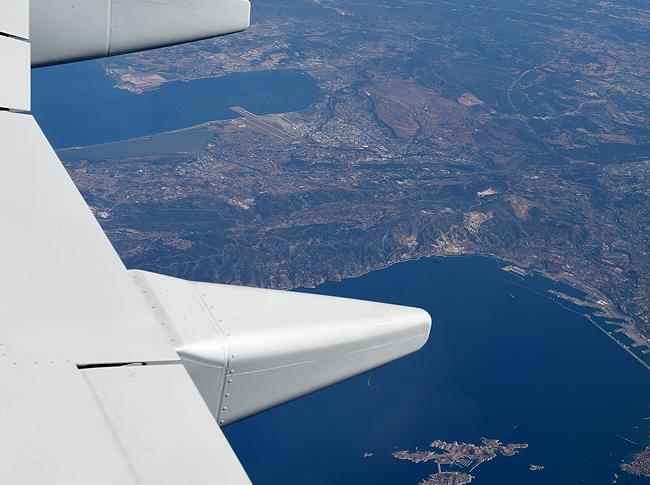
This is an important post, and thanks for sharing it. I will certainly keep this blog in mind while traveling. I will also recommend it to my friends.
Thank you, Arpita!
Thank you for uploading the beautiful photo of Egypt on wikipedia commons. The planning team for the new museum in Japan would like to show your picture at their exhibit. Would you please let us know if there is any requirement for the usage? I work as a museum researcher gathering images for them. Thank you for your comment or your email.
The image: Ramses V Mural
https://commons.wikimedia.org/wiki/File:Ramses_V_Mural_(Tomb_of_Ramses_V_VI_in_Valley_of_the_Kings_on_West_Bank_of_Luxor_Egypt).png
I’m flattered that you like the photo, Shikoda. Of course, there are no special requirements for use of a Wikipedia Commons shot in the museum. Enjoy!
Hello, Tim. Thank you so much for your reply. So glad to hear that we can use your photo at the museum. I will come back after it opens this July. Thanks again!!
Hello, Tim. I regret to inform you that the museum planning team changed their mind and decided to use different photo to tell their story…. Thank you any way for accepting our request and your beautiful photo.